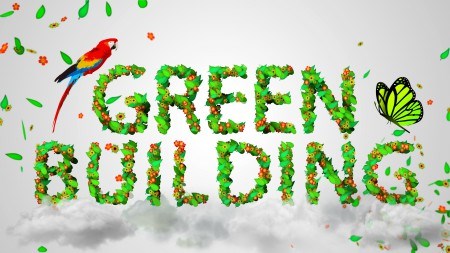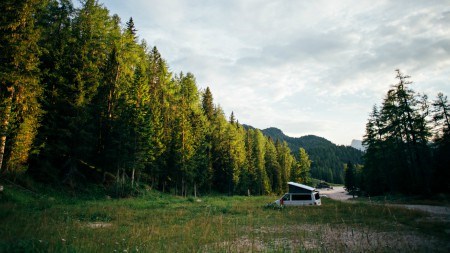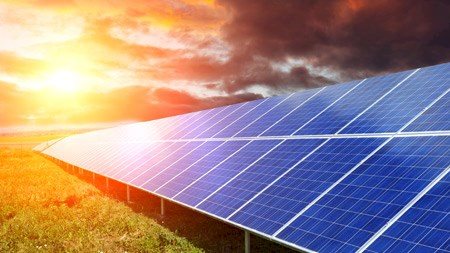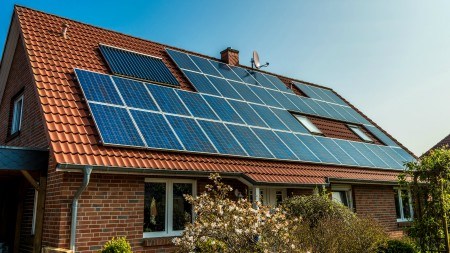The trend towards more sustainable and operational homes that have an eco- or green-friendly aspect, is escalating.
This is as true for South Africa as it is for the rest of world; more so as scientists reveal the enormous human health benefits and the lowering of environmental disturbances. Further benefits include saving money, energy and reducing waste and, says the Green Building Council of South Africa (GBCSA), also enhances saleability and manifests in a higher value asset.
Private Property interviewed the GBCSA’s Managing Executive: Market Engagement, Grahame Cruickshanks about green homes, who unpacks the status of this market, the advantages and features, and the introduction by the organisation, of the Net Zero concept.
Q: How progressive is South Africa's housing market in terms of green/eco build?
The South African Housing sector is rapidly transforming to supply greener homes. A big influence on this trend is the rapid increase in South African utility bills in recent years. New homes are being built to greener standards and frequently exceed the regulatory standards (SANS 1400 Part XA) for energy efficiency.
Examples of the trend towards greener homes are evident from the affordable housing segment such as the Fourleaf Estate in Port Elizabeth which was certified to the EDGE standard as well as many high-end eco estates currently being built in a number of beautiful locations in South Africa.
EDGE is a rating tool administered by GBCSA in partnership with the International Finance Corporation (IFC) to reduce energy and water consumption of buildings. At Val De Vie a partnership with Saint Gobain (a multinational building products manufacturer) has led to the design and construction of a home which explores four core principles linked to sustainable built environments namely: flexibility; openness; value; and comfort.
Q: What are the advantages of a green home?
Energy, Water, Waste:
Reduced operating costs via a reduction in resource consumption and improved indoor environmental quality levels are two of the most important advantages of green homes. Reduced energy consumption has already been proven as a significant advantage of green homes by reducing electricity bills and at the same time reducing CO2 emissions of SA’s grid supplied electricity. Over 95% of SA’s grid supplied electricity is from coal-fired power stations with one of the highest CO2 contents by global standards. Increasing shortages of potable (drinking) water in South Africa will lead to an increase in tariffs which may be similar to the electricity price hikes experienced in recent years. Reducing waste-to-landfill is often addressed through recycling and re-use systems in green homes adding further environmental benefit and future cost-savings to homeowners as waste collection rates increase.
Indoor Environmental Quality:
Green homes frequently address issues related to the comfort levels and health impacts on occupants, which is referred to as indoor environmental quality. Homes built with optimal orientation, correctly sized and positioned windows and doors as well as appropriate insulation are more comfortable during high and low temperature ranges. Homes with more comfortable indoor temperatures require less artificial heating and cooling thus offering further reductions in running costs as well as healthier living environments. The toxins contained in some building materials including paints, adhesives, and sealants can affect the human respiratory system. Green building interventions address these issues by requiring the specification of low or zero emissions of harmful substances.
Future-Proofed Assets:
Homes built or renovated to a green standard are more resilient to changing market conditions. As the demand for green homes increases over time, homeowners with green homes will reap the benefits of more saleable and higher value assets. Certification through a rating tool such as EDGE or Green Star, which the GBCSA administers, will add credibility to a green home. Green Star is a comprehensive rating system administered by GBCSA to certify buildings to a holistic green building standard.
Q: Is it a myth that eco-friendly homes cost more?
The capital expenditure to build or renovate a home to include green measures is much smaller than typically perceived. The cost premium can be as low as 0.1% to build to the EDGE standard. What homeowners need to consider is the total cost of ownership and the return on investment over the time spent owning the home. The primary cost savings (eg utility bills) and additional benefits (improved health) over time will determine the cost benefit ratio.
Q: What are the types of materials used to ensure a home is actually eco-friendly?
Aside from the toxins linked to indoor environmental quality and improved thermal performance through better insulation already mentioned, an important factor to consider is embodied energy. This term is used to describe the total amount of energy required to create and install a building component. This is similar to a carbon footprint in concept.
Building products typically begin their life as a raw material that is harvested, transported, processed and re-processed many times before being installed in a building. Two examples are steel and timber.
Steel starts out as an iron ore extracted from a mine that passes through a number of manufacturing processes, and which requires large amounts of energy and transport in order to reach it’s useful state as a structural, service or finishing building product. Timber is harvested from a forest or plantation and also passes through a number of manufacturing processes before being used as roof trusses, doors, windows, flooring, cabinets and a wide range of other applications. Steel and timber can both be recycled.
Establishing embodied energy is a complex process as it includes the energy consumption of each stage of a building products’ manufacture and installation but this is a big contributor to the overall environmental impact of a home. As the trend for homes to be more energy efficient continues, embodied energy will play a bigger role in greening the residential sector.
Q: What simple eco-friendly things can a home-owner do to their existing home?
It’s best to start with the simplest and most affordable steps and then move onto the higher cost interventions. By ensuring that a home reduces it’s resource demands first, homeowners can shorten return on investment periods linked to resource efficiency and renewable solutions such as solar energy and water recycling.
Step 1: Behavioural changes; eg turn down the geyser thermostat, iron fewer clothes, 3 – 4 minute showers.
Step 2: Low cost interventions; eg flow restrictors on taps, energy efficient lighting.
Step 3: Long term investments; eg solar water heaters, solar PV panels, grey water harvesting.
Comprehensive information on how to green your home affordably and reap the benefits is available on: www.smarthome.org.za
Q: What are the important considerations when selecting 'green' contractors, whether a new build, retrofit or extension?
A track record on green building projects, especially where certification has been achieved, is a good indicator of a contractor’s understanding of green building construction. In addition to this, a willingness to collaborate with the team of professionals, contractors and suppliers on the project will result in a better and greener end product. This can be difficult to establish through a quoting process and may require following up on references for previous projects.
Q: Should the land on which an eco-friendly home is sited, also be considered as part of the eco-friendly aspect?
A green building takes into account the impact of the project on the ecology of the site. Biodiversity can be enhanced through the introduction of indigenous and endemic plants which support a wider range of insect and birds. These plants typically require less water adding further environmental benefit. If the site is being completely excavated it is beneficial to retain and re-use the nutrient rich topsoil by storing it on site during the construction process.
Q: Can low-cost housing be 'green'?
There are a number of affordable housing projects in South Africa that have achieved EDGE certification including Belhar Gardens in Cape Town. This social housing development offers rental units to qualifying tenants from R700 per month and includes a number of energy and water efficiency measures.
Q: Are there any incentives for building/retrofitting a eco-friendly house?
There are a number of commercial benefits (noted earlier) which incentivise homeowners to build or alter their homes to a green standard. Some homeowners are motivated by a willingness to ‘do the right thing’ and this trend is emerging strongly amongst younger generations, including Millennials, with a strong social and environmental consciousness.
At present there are no policy incentives offered by the South African Government and the banking sector does not offer incentives for homeowners to build or renovate to a green standard … yet! GBCSA is optimistic that in the near future green mortgages will be offered by the SA banking sector to owners of certified green homes and recent commitments at City Level towards greening homes and neighbourhoods is encouraging.
Q: What is the Net Zero concept, introduced by the GBCSA?
Green homes are often portrayed as part of the green building trend towards reducing environmental impact ie ‘doing less bad’. It is true that GBCSA’s rating tools have rewarded projects for reducing but not eliminating their environmental impact. GBCSA has introduced the Net Zero concept which allows projects to be certified for achieving no environmental impact for carbon, water, waste and ecology. For carbon this means that all emissions generated by the homes operation are off-set by the amount of renewable energy (zero emissions) produced by the building. Given the positive signs and uptake of green building in the South African residential sector GBCSA sees Net Zero as the next tier of green homes in South Africa.
Q: What are the processes to follow to have a home certified as 'green'?
The process of having a home green certified in South Africa involves:
- Contacting GBCSA to register a project for certification
- Appointing the relevant green building consultant to guide the client, professionals, and contractor through the process. More information is available on this at: www.gbcsa.org.za or email us at: info@gbcsa.org.za





